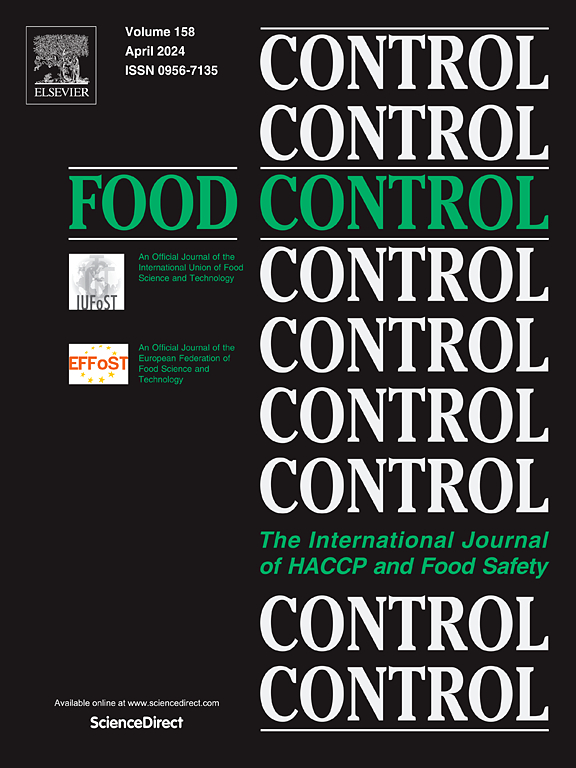Controlling Listeria monocytogenes contamination in fresh goat milk cheeses: Dynamic modelling during storage
IF 5.6
1区 农林科学
Q1 FOOD SCIENCE & TECHNOLOGY
引用次数: 0
Abstract
Predictive models applied for artisanal fresh goat cheeses are invaluable tools for rapid decision-making in quality and safety management. Listeria monocytogenes is a common foodborne pathogen associated with recent safety alerts in ready-to-eat (RTE) products in Andalucia. Managing artisanal production variables, such as storage conditions and final product features (pH or water activity [aw]) might be crucial for controlling L. monocytogenes in these traditional products. This study evaluated the time-temperature dependence of L. monocytogenes during shelf-life of fresh goat milk cheese artisanally produced in Andalucía. The effect of storage temperature (4–25 °C) over 5–20 days was tested in lab-scale fresh goat milk cheeses initially inoculated with a three-strain cocktail of the pathogen (ca. 2–3 log cfu/g). The Huang (model A) and Baranyi (model B) models coupled with Ratkowsky were fitted to the collected growth data to describe the relationship between L. monocytogenes concentration, growth rate (μmax, log cfu/d), storage temperature, and time. The results highlighted the higher variability of growth data at 4 °C, the linear relationship between μmax and temperature, the inverse correlation between ymax (exceeding 5 log cfu/g at all the temperatures) and ΔY (with a maximum of 4.386 and minimum of 2.461, at 4 and 25 °C, respectively) and a faster decrease of pH at higher temperatures. Model validity, assessed through goodness-of-fit and both internal and external validations (under both isothermal temperatures and a dynamic temperature workflow simulating real production scenario), revealed good model adjustment to L. monocytogenes growth in artisanal commercial cheeses, after determining a correction factor of 1.806 and 1.856, for models A and B, respectively. Predictions indicated that an initially contaminated artisanal fresh goat milk cheese would not meet regulatory limits after 4 days under refrigeration conditions (4 °C), aerobic conditions, or opened packaging. These results highlight the potential public health risk of artisanal fresh goat milk cheeses related to L. monocytogenes transmission if manufacturing and storage conditions are not well controlled, emphasizing the need for stringent microbial control efforts and mitigation measures.

求助全文
约1分钟内获得全文
求助全文
来源期刊

Food Control
工程技术-食品科技
CiteScore
12.20
自引率
6.70%
发文量
758
审稿时长
33 days
期刊介绍:
Food Control is an international journal that provides essential information for those involved in food safety and process control.
Food Control covers the below areas that relate to food process control or to food safety of human foods:
• Microbial food safety and antimicrobial systems
• Mycotoxins
• Hazard analysis, HACCP and food safety objectives
• Risk assessment, including microbial and chemical hazards
• Quality assurance
• Good manufacturing practices
• Food process systems design and control
• Food Packaging technology and materials in contact with foods
• Rapid methods of analysis and detection, including sensor technology
• Codes of practice, legislation and international harmonization
• Consumer issues
• Education, training and research needs.
The scope of Food Control is comprehensive and includes original research papers, authoritative reviews, short communications, comment articles that report on new developments in food control, and position papers.
 求助内容:
求助内容: 应助结果提醒方式:
应助结果提醒方式:


